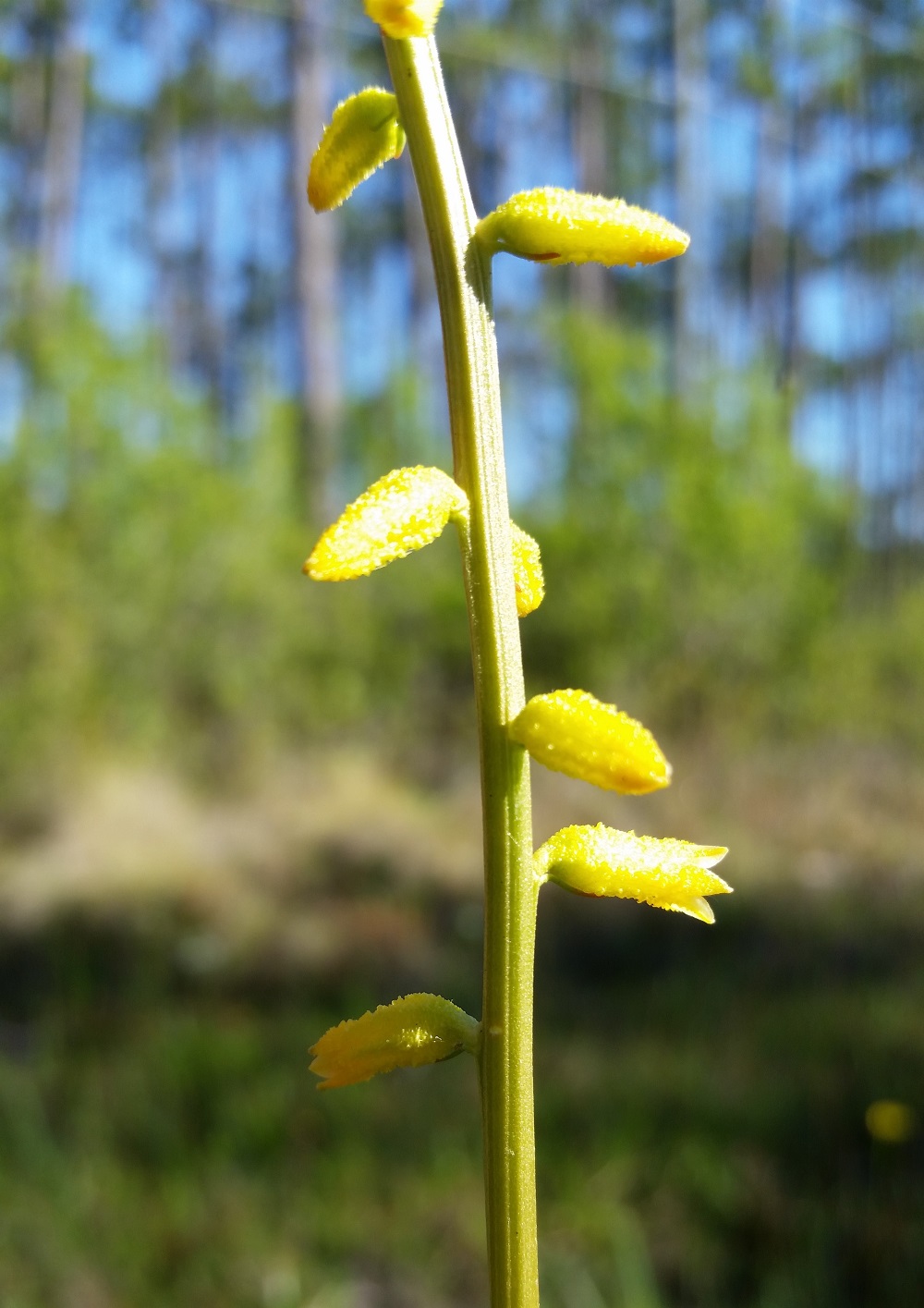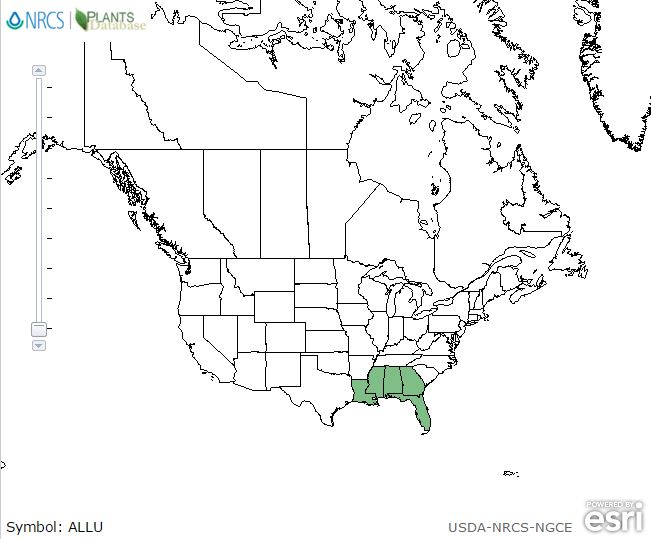Difference between revisions of "Aletris lutea"
(Created page with "{{italic title}} <!-- Get the taxonomy information from the NRCS Plants database --> {{taxobox | name = Aletris lutea | image = Aletris_lutea.jpg | image_caption = Photo taken...") |
HaleighJoM (talk | contribs) (→Ecology) |
||
| (14 intermediate revisions by 6 users not shown) | |||
| Line 4: | Line 4: | ||
| name = Aletris lutea | | name = Aletris lutea | ||
| image = Aletris_lutea.jpg | | image = Aletris_lutea.jpg | ||
| − | | image_caption = Photo | + | | image_caption = Photo by Katelin Pearson |
| regnum = Plantae | | regnum = Plantae | ||
| divisio = Tracheophyta - Vascular plants | | divisio = Tracheophyta - Vascular plants | ||
| Line 14: | Line 14: | ||
| binomial = ''Aletris lutea'' | | binomial = ''Aletris lutea'' | ||
| binomial_authority = Small | | binomial_authority = Small | ||
| − | | range_map = Aletris_lutea_dist. | + | | range_map = Aletris_lutea_dist.JPG |
| range_map_caption = Natural range of ''Aletris lutea'' from USDA NRCS [http://www.plants.usda.gov/core/profile?symbol=ALLU Plants Database]. | | range_map_caption = Natural range of ''Aletris lutea'' from USDA NRCS [http://www.plants.usda.gov/core/profile?symbol=ALLU Plants Database]. | ||
}} | }} | ||
| − | Common | + | Common name: Yellow colicroot |
==Taxonomic notes== | ==Taxonomic notes== | ||
| − | The genus name ''Aletris'' comes for the Greek word for a female slave who ground corn, this is in reference to the perianth shaped like a corn kernel. | + | The genus name ''Aletris'' comes for the Greek word for a female slave who ground corn, this is in reference to the perianth shaped like a corn kernel.<ref name="alabama">[[http://www.alabamaplants.com/Yellowalt/Aletris_aurea_page.html]]Alabama Plants. Accessed: March 22, 2016</ref> |
| + | |||
| + | No synonyms.<ref name="weakley">Weakley, A.S. 2015. Flora of the southern and mid-atlantic states. Working Draft of 21 May 2015. University of North Carolina at Chapel Hill, Chapel Hill, North Carolina.</ref> | ||
| + | |||
| + | No varieties.<ref name="weakley">Weakley, A.S. 2015. Flora of the southern and mid-atlantic states. Working Draft of 21 May 2015. University of North Carolina at Chapel Hill, Chapel Hill, North Carolina.</ref> | ||
==Description== | ==Description== | ||
<!-- Basic life history facts such as annual/perrenial, monoecious/dioecious, root morphology, seed type, etc. --> | <!-- Basic life history facts such as annual/perrenial, monoecious/dioecious, root morphology, seed type, etc. --> | ||
A description of ''Aletris lutea'' is provided in [http://efloras.org/florataxon.aspx?flora_id=1&taxon_id=242101325 The Flora of North America]. | A description of ''Aletris lutea'' is provided in [http://efloras.org/florataxon.aspx?flora_id=1&taxon_id=242101325 The Flora of North America]. | ||
| − | |||
==Distribution== | ==Distribution== | ||
| − | |||
==Ecology== | ==Ecology== | ||
| − | ===Habitat=== | + | <!--===Habitat===--> |
| − | + | ===Phenology=== | |
| − | ===Phenology===< | + | Flowers in January and March to June with peak inflorescence in April and May.<ref>Nelson, G. [http://www.gilnelson.com/ PanFlora]: Plant data for the eastern United States with emphasis on the Southeastern Coastal Plains, Florida, and the Florida Panhandle. www.gilnelson.com/PanFlora/ Accessed: 7 DEC 2016</ref> |
| − | + | <!--===Seed dispersal===--> | |
| − | ===Seed dispersal=== | + | <!--===Fire ecology===--> |
| − | |||
| − | ===Fire ecology=== | ||
<!--===Pollination===--> | <!--===Pollination===--> | ||
| − | <!--=== | + | <!--===Herbivory and toxicology===--> |
<!--===Diseases and parasites===--> | <!--===Diseases and parasites===--> | ||
| − | ==Conservation | + | ==Conservation, cultivation, and restoration== |
| − | |||
| + | ==Cultural use== | ||
==Photo Gallery== | ==Photo Gallery== | ||
<gallery widths=180px> | <gallery widths=180px> | ||
</gallery> | </gallery> | ||
| − | |||
==References and notes== | ==References and notes== | ||
Latest revision as of 17:35, 15 June 2022
| Aletris lutea | |
|---|---|

| |
| Photo by Katelin Pearson | |
| Scientific classification | |
| Kingdom: | Plantae |
| Division: | Tracheophyta - Vascular plants |
| Class: | Magnoliopsida– Monocotyledons |
| Order: | Dioscoreales |
| Family: | Nartheciaceae |
| Genus: | Aletris |
| Species: | A. lutea |
| Binomial name | |
| Aletris lutea Small | |

| |
| Natural range of Aletris lutea from USDA NRCS Plants Database. | |
Common name: Yellow colicroot
Contents
Taxonomic notes
The genus name Aletris comes for the Greek word for a female slave who ground corn, this is in reference to the perianth shaped like a corn kernel.[1]
No synonyms.[2]
No varieties.[2]
Description
A description of Aletris lutea is provided in The Flora of North America.
Distribution
Ecology
Phenology
Flowers in January and March to June with peak inflorescence in April and May.[3]
Conservation, cultivation, and restoration
Cultural use
Photo Gallery
References and notes
- ↑ [[1]]Alabama Plants. Accessed: March 22, 2016
- ↑ 2.0 2.1 Weakley, A.S. 2015. Flora of the southern and mid-atlantic states. Working Draft of 21 May 2015. University of North Carolina at Chapel Hill, Chapel Hill, North Carolina.
- ↑ Nelson, G. PanFlora: Plant data for the eastern United States with emphasis on the Southeastern Coastal Plains, Florida, and the Florida Panhandle. www.gilnelson.com/PanFlora/ Accessed: 7 DEC 2016